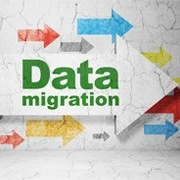10 Best Practices for Successful Data Migration

Data migration process is crucial for any organization as it ensures complete data integrity and minimizes disruption of routine business operations. However, migrating various forms of data from multiple sources is a complex and cumbersome task for any organization.
The entire data migration process requires a lot of effort and planning, well in advance. Data from all the sources, cloud or local storage devices, must be analyzed, cleansed, and organized before it is reconciled and combined. Any new rules and regulation which the company employees will have to comply with must also be taken care of. If data migration and shifting to new data management system is taking a toll on your business, you are at the right place. This article lists some useful and handy data migration tips which need to be followed by companies while planning their data migration strategy or creating a data migration checklist.
10 Best Practices for Data Migration
With newer technologies coming into being with every passing day, the need to move existing data to a new information management system is becoming more important. There are certain challenges which you may face during the migration process but there are certain data migration tips, which when followed will simplify the entire process. Some of the most useful tips for data migration are listed here -
Examine the Data Complexity

One of the key steps in the data migration checklist is to evaluate the complexity of the data and the resources which the company possesses. The complexity of the data strings can have a huge impact on the direction the company takes when you undertake the migration and integration process.
Set Up Data Standards

After various forms of organizational data are examined and evaluated, it is always a good practice to have a detailed set of data standards in place. Data is one entity which keeps changing with time and therefore it is important to have certain standards in place during the migration process. This step will ensure a more efficient use of data in the future.
Clearly Define Future and Current Business Rules

Apart from establishing data standards, businesses should define the current and future business rules which will apply to your data usage. These rules must comply and be compatible with different validation and business rules. This is not only required for information migration, but it is also needed for all future policy regulations and requirements.
Outline Data Governance Roles

For any company, it is important to figure out who manages the information, who is responsible for maintaining the data accuracy, and who all can access the information in the organization. This helps in clearly defining information governance roles and responsibilities. However, it is important to be careful when choosing the team members and managers.
Assess Data Quality

Before the data is shifted from one platform to another, a thorough data quality check is needed to ensure that the data being migrated is of high quality. The data quality check process must involve removal of any kind of irrelevant, duplicate files which are not needed in the future and also the creation of a master data file.
Shortlist Migration Requirements

Once the data is analyzed, cleansed, and the rules and standards are defined, gathering the migration requirement is a simple and straight forward process. It is important to carefully analyze how the company's data will be used, who will be using it, and how it will change in the future.
Identify the Best Tool

After all the requirements are collected, and the data is identified and cleansed, it is important to assess and identify a proper tool to carry out the migration process. An ideal tool will be the one which provides an option to have customized fields, aligns with your company's requirements, and is highly recommended by the experts in the industry.
Have a Risk Management System in Place

Risk management is an integral part of the migration process. One must ensure that all the required data is easily accessible for any kind of audits. Also, all the data systems must comply with all the different government, companywide, and industrywide rules and regulations. This can be achieved only when you have an efficient risk management system in place.
Manage Organizational Changes

This is one of the most important steps for successful data migration. The organization must carefully analyze and educate the users, vendors, customers, and partners who participate in the new data system. This makes it a successful transition for all the parties involved and also keeps them on board for the future.
Perform Migration Testing

Migration testing is a process which needs to be done throughout the migration process and should not be withheld until the migration is complete. This helps to detect any kind of mistakes and defects at a stage where it can be still fixed. Once the migration is complete, the team of data experts must perform a more extensive set of tests to examine the new system before anybody starts using it.
Avail Efficient Data Migration Services at Outsource2india
Outsource2india is a leading outsourcing company offering comprehensive data management services to global clients for over 27 years. Having served clients from different domains and verticals, we understand the needs of different businesses and provide custom data migration services that precisely cater to their needs.
Our state-of-the-art infrastructure and access to latest data migration tools and technologies empowers us to provide cost-effective data migration services without any hassles. Additionally, our project managers keep a constant track of the work done by the database developers and information migration experts and regularly update the clients with all the latest developments to ensure quick turnaround time.
If you are looking for quick and hassle-free data migration services, get in touch with us today.
Get a FREE QUOTE!
Decide in 24 hours whether outsourcing will work for you.
Have specific requirements? Email us at: ![]()
-
 O2I's Data Management Services to A Funding Company in The US Led to Increased Business Closures
O2I's Data Management Services to A Funding Company in The US Led to Increased Business Closures
-
 Optimizing Purchase Order Processing for a Leading IT Solutions Provider
Optimizing Purchase Order Processing for a Leading IT Solutions Provider
-
 Outsource2india Provided Data Extraction to an Auckland-based Client
Outsource2india Provided Data Extraction to an Auckland-based Client
-
 Outsource2india Provided Scanning & Data Entry to a UK-based Software Firm
Outsource2india Provided Scanning & Data Entry to a UK-based Software Firm
-
 Outsource2india Provided PDF to Excel Data Conversion for a Florida-based Professor
Outsource2india Provided PDF to Excel Data Conversion for a Florida-based Professor -
 Outsource2india Provided e-commerce Data Entry to Bike Accessories Seller
Outsource2india Provided e-commerce Data Entry to Bike Accessories Seller
Data Entry Services in Philippines Choose us for highly efficient, accurate, and cost-effective data entry services Read More














